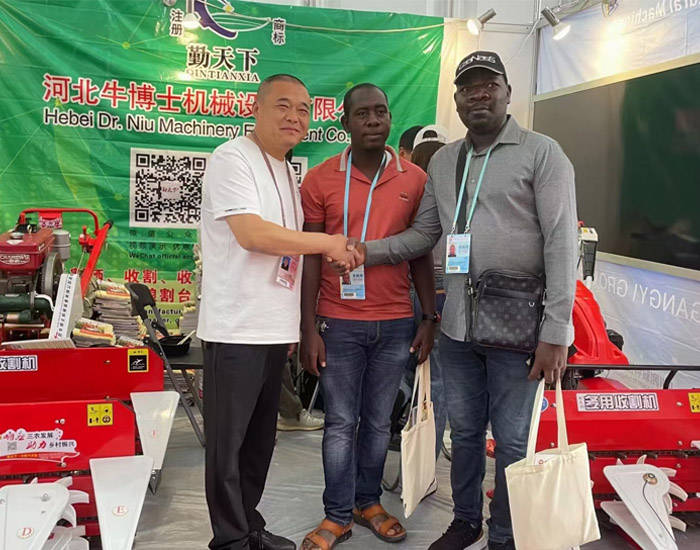rice cutting and binding machine
The Evolution and Importance of Rice Cutting and Binding Machines
Rice is one of the most important staple foods in the world, feeding billions of people. The process of harvesting rice, traditionally done by hand, involves significant physical labor and time. However, the advent of rice cutting and binding machines has transformed rice harvesting, increasing efficiency and reducing the workload on farmers. This article explores the evolution, technology, and benefits of these machines, highlighting their pivotal role in modern agriculture.
Evolution of Rice Harvesting Techniques
Historically, small-scale farmers relied on hand tools such as sickles and knives for rice harvesting. This labor-intensive process was not only time-consuming but also posed challenges such as inconsistent grain quality and crop losses. As agricultural needs grew with population increases and urbanization, the demand for more efficient harvesting methods became apparent.
In the mid-20th century, mechanized agriculture began to take root, propelled by technological advancements and an increasing reliance on machinery in farming practices. The introduction of mechanized rice harvesters revolutionized the industry. These machines not only cut the rice stalks but also bind them into manageable bundles, allowing for easier collection and processing. As technology progressed, improvements in design, efficiency, and functionality of these machines became a focal point for agricultural engineers and manufacturers.
How Rice Cutting and Binding Machines Work
Rice cutting and binding machines operate through a combination of cutting, threshing, and binding mechanisms. The harvesting process begins with the machine moving through the rice fields, using sharp blades to cut the rice stalks close to the ground. This cutting mechanism is designed to minimize damage to the grains, which is crucial for maintaining quality.
After cutting, the rice stalks are transported into a binding chamber where they are securely tied into bundles. This step is essential as it facilitates easier handling and transportation of the harvested rice. With advanced models, these machines can also include threshing functions that separate the rice grains from the stalks, streamlining the harvesting process even further.
Benefits of Mechanization in Rice Harvesting
The impact of rice cutting and binding machines on agricultural efficiency cannot be overstated. Here are several key benefits
rice cutting and binding machine

1. Increased Efficiency These machines significantly reduce the time required for harvesting, allowing farmers to cover larger areas in a shorter period. This efficiency is particularly beneficial during harvest seasons when timely collection is critical to prevent crop losses due to weather conditions.
2. Reduced Labor Demand By mechanizing the harvesting process, the reliance on manual labor decreases. This not only alleviates the physical burden on farmers but also addresses the scarcity of agricultural labor, a growing concern in many countries.
3. Improved Crop Quality Machines are designed to minimize crop damage during the harvesting process, leading to better quality grains. This is vital for farmers aiming to achieve higher market prices for their produce.
4. Cost-Effectiveness While the initial investment in a rice cutting and binding machine may be significant, the long-term savings in labor costs and increased yields often justify the expense.
5. Sustainability Mechanized harvesting can promote more sustainable farming practices by allowing for more efficient use of resources. For instance, better timing in harvesting can lead to reduced spoilage and waste.
The Future of Rice Harvesting Technology
As technology continues to evolve, the future of rice cutting and binding machines looks promising. Innovations such as precision farming, artificial intelligence, and automation are set to enhance the functionality of these machines further. For example, smart tractors equipped with sensors could optimize harvesting routes based on real-time field data, maximizing efficiency and reducing fuel consumption.
Additionally, the integration of sustainable practices in agriculture is becoming increasingly important. Engineers are focusing on developing machines that use less fuel and produce fewer emissions, aligning with global efforts to combat climate change.
Conclusion
Rice cutting and binding machines represent a significant advancement in agricultural practices, enabling farmers to meet the increasing demand for rice while enhancing efficiency and sustainability. As we continue to innovate and refine these technologies, the future of rice harvesting looks brighter than ever, ensuring that this essential crop remains accessible to billions around the world. Through mechanization, we can celebrate not only increased productivity but also improved livelihoods and the sustainability of rice farming for generations to come.
Latest news
-
Mini Combine Harvester for Soybean | Compact & Efficient Soybean Harvesting SolutionsNewsNov.24,2025
-
Mini Combine Harvester for Paddy – Compact, Efficient Rice Harvesting SolutionsNewsNov.24,2025
-
Mini Chain Harvester: Compact Forestry Solutions for Sustainable LoggingNewsNov.23,2025
-
Kartar Mini Harvester – Compact, Efficient Harvesting Machinery for Small FarmsNewsNov.23,2025
-
Compact Power: Elevate Your Farming with Harvesting Machine SmallNewsNov.22,2025
-
Discover the Power and Potential of Harvester Mini Combine Machines | Efficient Small-Scale HarvestingNewsNov.22,2025








